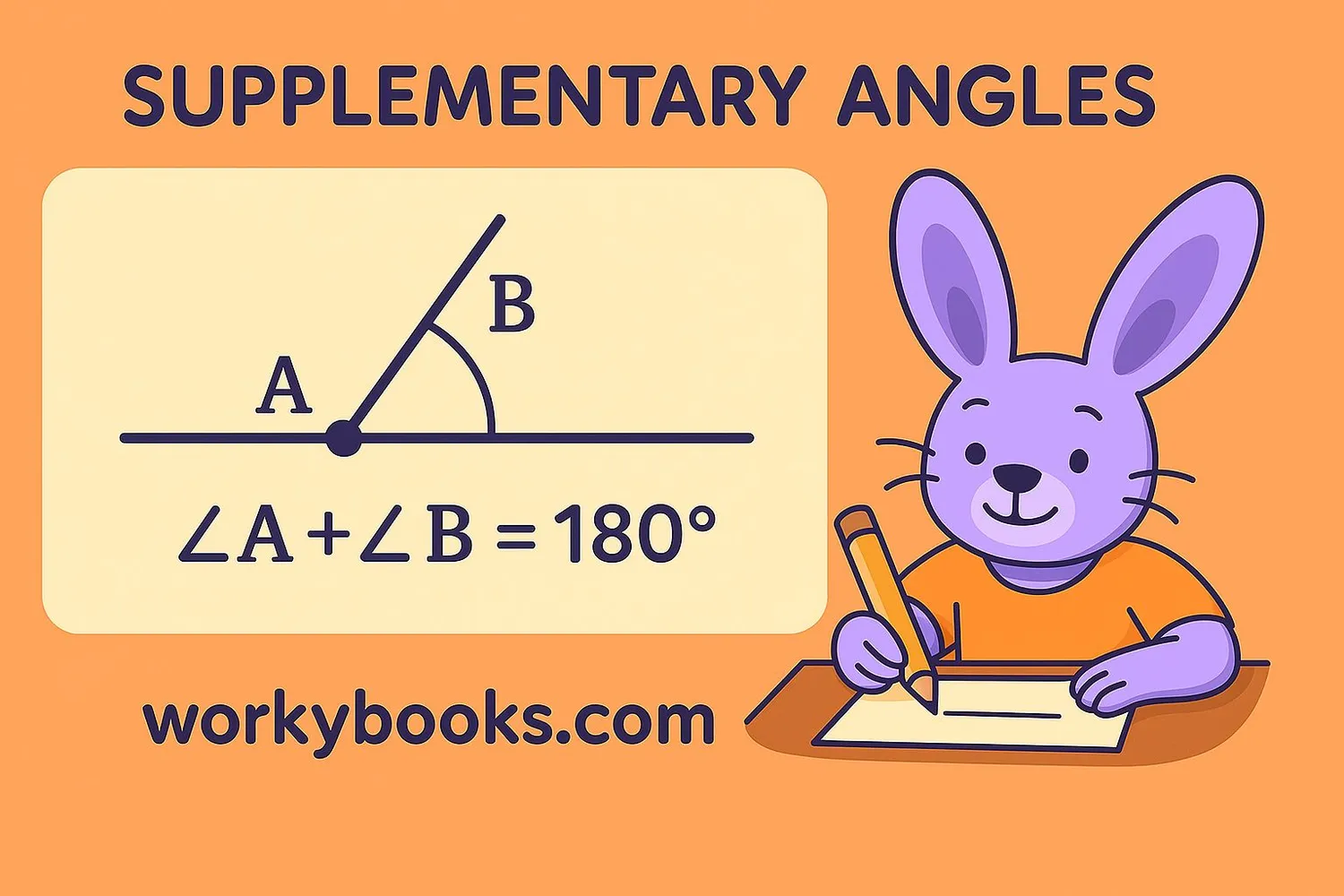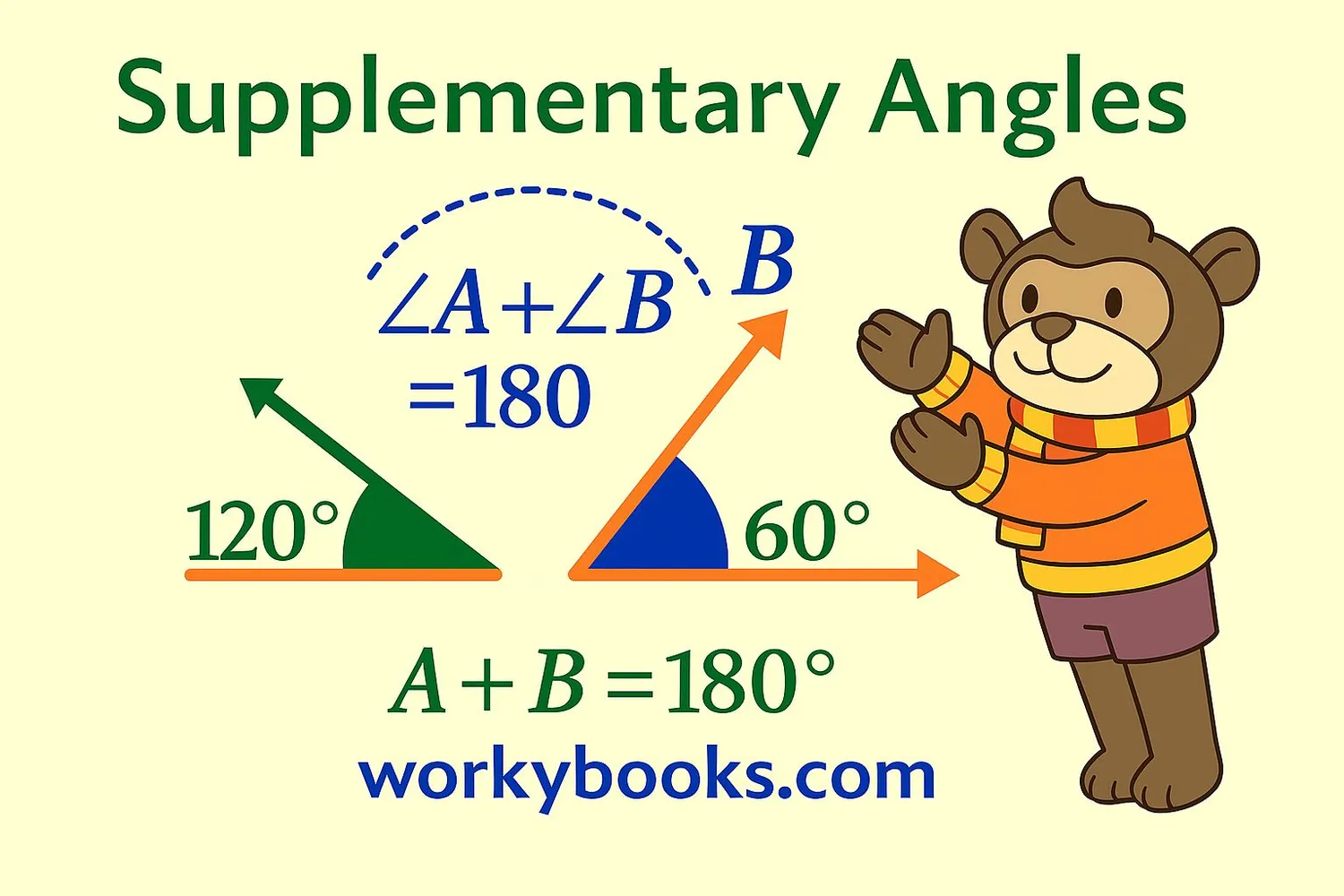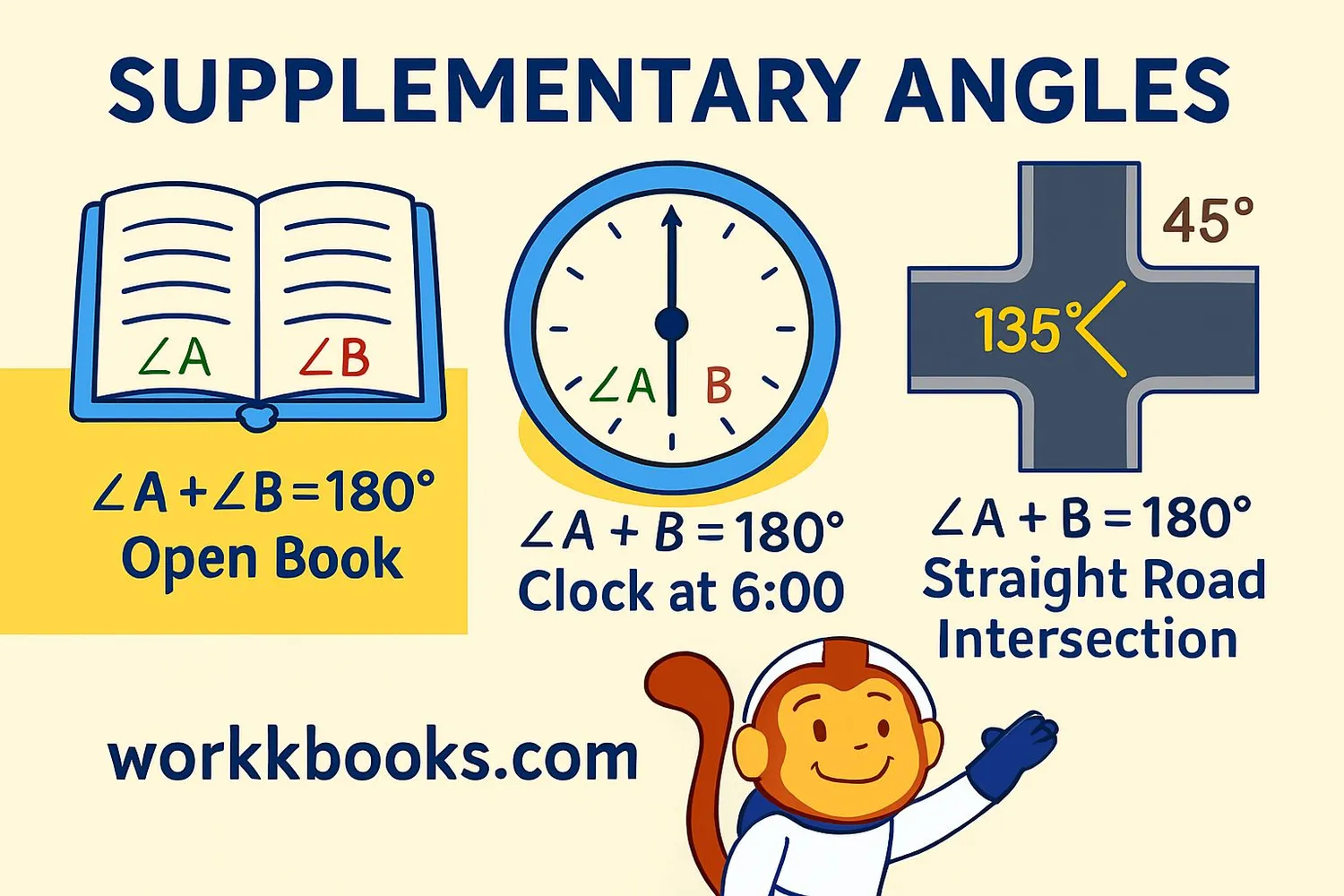Supplementary Angles - Definition, Examples, Facts & Quiz, FAQ, Trivia
Discover angles that add up to 180 degrees and form straight lines
What Are Supplementary Angles?

Supplementary angles are two angles whose measures add up to exactly 180 degrees. When placed adjacent to each other (sharing a common vertex and side), they form a straight line. Each angle is called the "supplement" of the other.
Imagine opening a book - the angles formed by the two covers and the spine are supplementary when the book is open to a straight line. Or think of the hands of a clock at 6:00 - they form a 180° angle that can be divided into two supplementary angles.
Supplementary Angle Formula
If two angles are supplementary, their measures always add up to 180 degrees.
Key Concept
Supplementary angles don't have to be adjacent! They can be separate angles as long as their sum is 180°.
Properties of Supplementary Angles

Supplementary angles have several interesting properties that make them special in geometry:
- Sum is always 180°: This is the defining property of supplementary angles.
- Can be adjacent or non-adjacent: They don't need to be next to each other to be supplementary.
- Form a straight line when adjacent: When placed side by side, they create a perfectly straight line.
- Each angle is the supplement of the other: If ∠A is 70°, its supplement is 110°.
- Right angles can be supplementary: Two right angles (90° each) add up to 180°.
Complementary vs. Supplementary
Complementary angles add up to 90° (forming a right angle), while supplementary angles add up to 180° (forming a straight line).
Real-World Examples

Supplementary angles appear all around us in the real world:
Example 1: Open Book
When you open a book, the angles between the two covers and the spine add up to 180°.
Example 2: Clock at 6:00
The hands of a clock form a straight line at 6:00, creating a 180° angle that can be divided into two supplementary angles.
Example 3: Straight Roads
At intersections, supplementary angles form between adjacent roads. If one angle is 135°, the adjacent angle will be 45° because 135° + 45° = 180°.
Math Tip
To find a supplementary angle, subtract the known angle from 180°. For example, the supplement of 70° is 180° - 70° = 110°.
Supplementary Angles Quiz
Test your knowledge with this 3-question quiz. Choose the correct answer for each question.
Frequently Asked Questions
Common questions about supplementary angles:
Geometry Trivia
Fascinating facts about angles and geometry:
Ancient Angle Knowledge
The concept of angles dates back to ancient Babylonian astronomers around 2000 BCE. They divided circles into 360 degrees, which is why we still use 360° in a circle today.
Nature's Angles
Honeybees use their understanding of angles to communicate. Their "waggle dance" indicates food sources by forming specific angles relative to the sun.
Architectural Angles
The Leaning Tower of Pisa leans at about 4° angle. Engineers used supplementary angle principles to stabilize it and prevent collapse by counterbalancing the lean.





